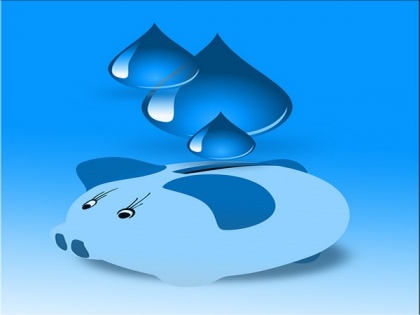By 2040, almost 1 in 4 children will live in areas of extremely high water stress
By ANI | Published: March 23, 2020 02:27 AM2020-03-23T02:27:24+5:302020-03-23T10:01:22+5:30
Water and climate change are inextricably linked. When climate change and water scarcity affect communities, children are among the most vulnerable. By 2040, almost one in four children will live in areas of extremely high water stress.

By 2040, almost 1 in 4 children will live in areas of extremely high water stress
New York [USA], Mar 23 : Water and climate change are inextricably linked. When climate change and water scarcity affect communities, children are among the most vulnerable. By 2040, almost one in four children will live in areas of extremely high water stress.
Around 500 million children now live in areas at extremely high risk of floods due to extreme weather events such as cyclones, hurricanes, and storms, as well as rising sea levels. Nearly 160 million children live in areas of high or extremely high drought severity.
So, the theme for this year's World Water Day is significant as it focuses on 'Water scarcity' and 'Climate change'.
Contaminated water poses a huge threat to children's lives. Water and station-related diseases are one of the leading causes of death in children under five years old. Every day, over 700 children under five die from diarrhea linked to inadequate water, station and hygiene
Climate change is affecting rainfall patterns as well, often changing its intensity, duration, and distribution across seasons, which in turn affects the amount and quality of drinking water.
As in the last 10 years, floods, droughts, and other weather-related events have caused more than 90 per cent of major natural disasters. With climate change, their frequency and intensity are only expected to increase. When disasters hit, they can destroy or contaminate entire water supplies, increasing the risk of diseases like cholera and typhoid, to which children are particularly vulnerable.
Climate change exacerbates water scarcity and can also increase the competition for limited water resources, in some cases forcing people to move to other areas. Extreme weather events can damage or destroy water systems, as well as other basic services that children need to survive and thrive, including station facilities, schools, and healthcare facilities.
While mitigating is very important, adapting to the impacts of climate change on the water is critical to protect children's health and save their lives. Using water more efficiently and transitioning to solar-powered water systems will reduce greenhouse gases and further protect children's futures.
Improving how we extract, use and manage water resources can reduce greenhouse gas emissions, which is essential for climate change mitigation and adaptation.
Transitioning to solar-powered water systems, in communities, schools, and healthcare facilities will ensure efficient use, management, and conservation of water and increase community resilience. There is enormous potential and need to strengthen cooperation across borders and regions to manage water resources and address climate impacts that go beyond national boundaries.
And as coronavirus, continues to spread around the world, health authorities have been encouraging people to pursue simple preventive steps to prevent the transmission of the deadly disease, including handwashing, safe drinking water, station and adoption of safe hygiene practices.
In this regard, the Government of India's Swachh Bharat Mission Phase 2 and Jal Jeevan Mission are striving to reach millions of children and their families in India.
India, the second-most populous country in the world is currently designated as 'water-stressed' by the Inter-governmental panel on Climate Change (IPCC).
In response to the increasing incidences of water scarcity in the country, affecting many major cities and large rural areas, as well as government's determination of providing every household with a Functional Tap Water Connection (FHTC), a mass public movement (Jan-Andolan) that focuses on the following key messages will be launched on World Water Day, focusing on:
* Families and communities-conserve water
* Families ensure safe collection, storage and handling of drinking water
* Communities demand for household connections
* Communities/households contribute to maintain piped water supply
* Communities demand for the regular review of water sources from Gram Panchayat committees to ensure proper operation and maintenance of water sources.
The effort also targets capacity building, awareness generation, and understanding of WASH preparedness, prevention and response practices against the Novel Coronavirus disease to reduce its impact (exposure) on the general public, including women and children in India.
( With inputs from ANI )
Open in app